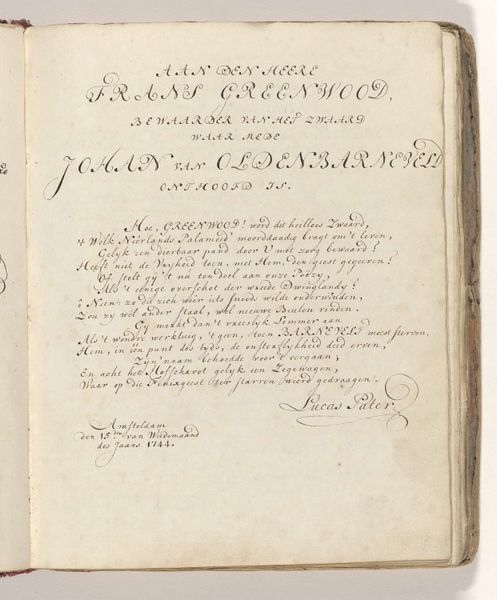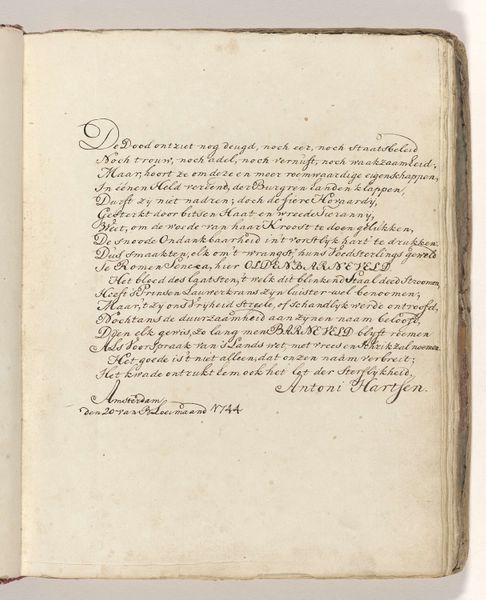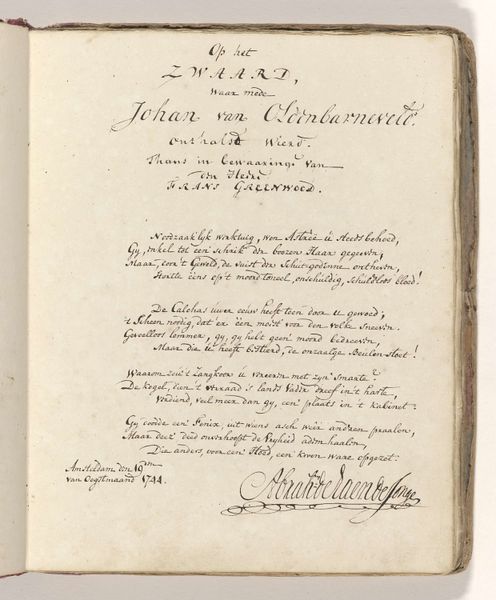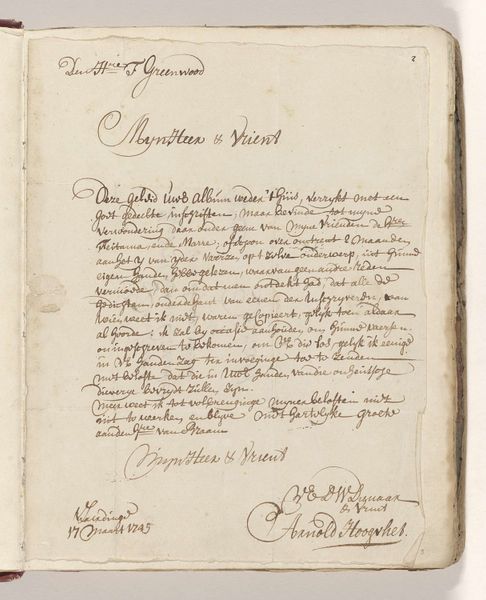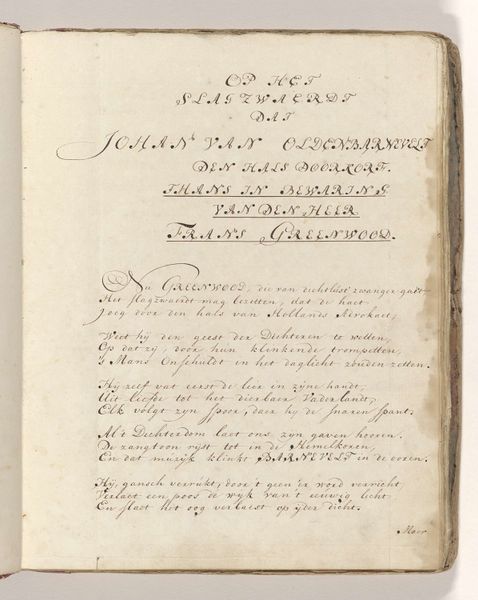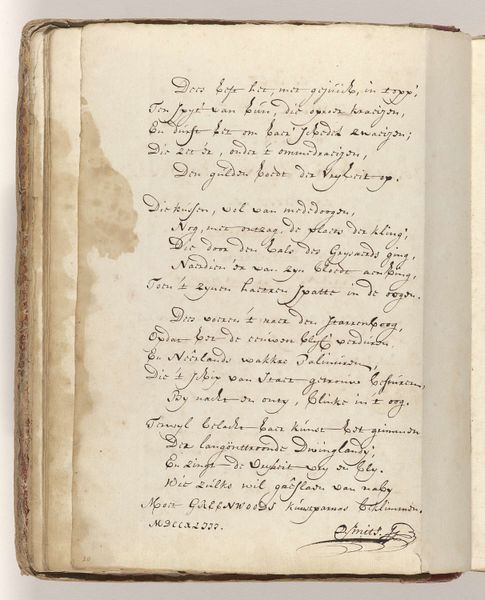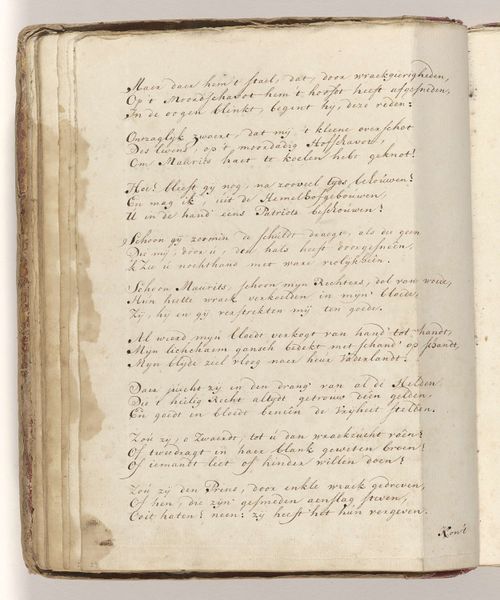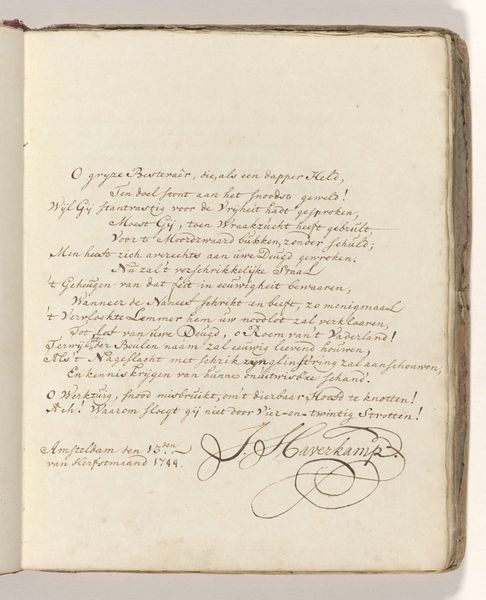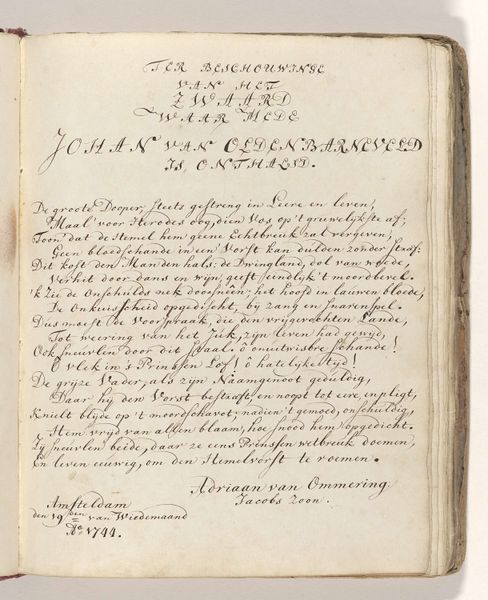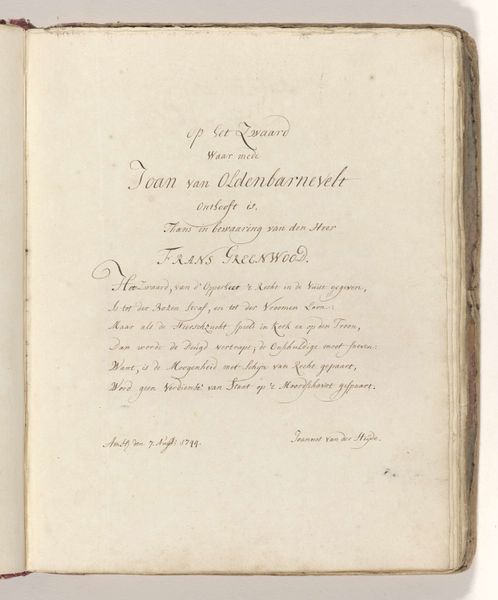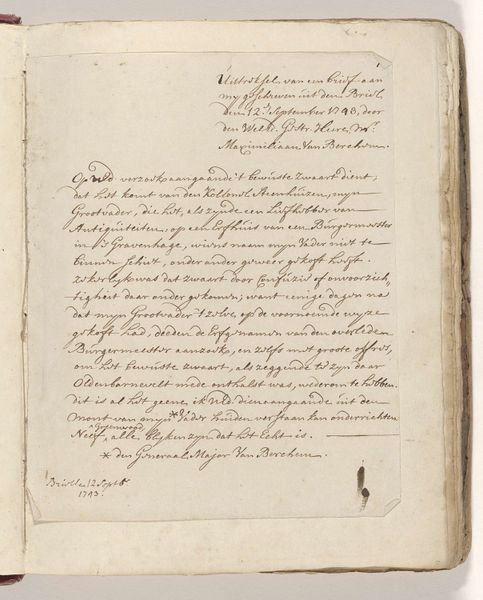
Gedicht op het zwaard waarmee Johan van Oldenbarnevelt in 1619 zou zijn onthoofd Possibly 1744
0:00
0:00
drawing, paper, ink
#
drawing
#
paper
#
ink
#
calligraphy
Dimensions: height 275 mm, width 220 mm
Copyright: Rijks Museum: Open Domain
Curator: Here, we have a drawing on paper in ink with a striking example of calligraphy. It's called “Gedicht op het zwaard waarmee Johan van Oldenbarnevelt in 1619 zou zijn onthoofd," or "Poem on the sword with which Johan van Oldenbarnevelt was supposedly beheaded in 1619,” possibly from 1744, by Kornelis Westerbaen Willemsz. Editor: My first impression is somber, weighted with the gravity of its subject. The handwritten text coils like a serpent, dense and dark. It almost feels oppressive. Curator: Precisely. The calligraphy itself becomes part of the meaning, the tightly wound script evoking constraint, violence even. Observe how the shapes of the letters convey a sense of formality but also an unsettling energy. Editor: Yes, it visually reinforces the themes of justice and judgment, doesn't it? But this piece is not just about aesthetic skill; it serves as an artifact deeply connected to the narratives of power and politics in the Netherlands. The poem evokes Van Oldenbarnevelt's execution, a major event that underscores the tensions between state authority and individual rights. Curator: Agreed. But what stands out is the composition: The density of the text, its placement on the page, create a unique visual experience that emphasizes textual meaning above all else. Look at how the strokes vary in thickness, producing a sense of visual rhythm. Editor: That is hard to separate from its commemorative intent. Westerbaen isn't simply showcasing skillful penmanship; he is actively engaging with the historical memory and moral complexities of a very particular historical trauma. How might the average contemporary viewer interpret that relationship between the formal textual style and a tragic subject from Dutch history? Curator: Perhaps the viewer may also look at it from the standpoint of beauty and craftsmanship that still speaks today, and think of how our interpretation as theorists would have an emotional impact too. Editor: Right, let's hold in mind both our scholarly readings and what it's trying to suggest to a broader public interested in poetry, violence, and Dutch statehood.
Comments
No comments
Be the first to comment and join the conversation on the ultimate creative platform.
